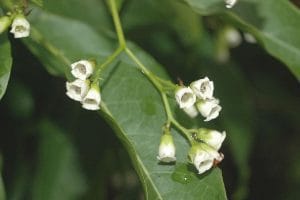
Bourreria
Basic Information Common Name: Bourreria Scientific Name: Bourreria Native Habitat: Tropical and subtropical regions of the Americas, including the Caribbean. History / Discovery / Cultivator
Common Name: Bourreria
Scientific Name: Bourreria
Native Habitat: Tropical and subtropical regions of the Americas, including the Caribbean.
Bourreria is a genus of flowering plants in the borage family, Boraginaceae. The exact history of the discovery and naming of the Bourreria genus is intertwined with the broader botanical exploration efforts of the 18th and 19th centuries. While a specific “discoverer” isn’t typically attributed to the genus as a whole, the individual species within Bourreria were likely identified and described by various botanists during expeditions to the tropical and subtropical regions of the Americas, where the plants are primarily found.
The genus name “Bourreria” itself honors Johann Ambrosius Beurer (1656-1738), a German physician and botanist. Plant genera are often named after individuals to commemorate their contributions to the field of botany. Beurer was known for his work in botany and medicine, which would have been relevant to the naming of a plant genus.
The cultivation and popularization of specific Bourreria species have likely occurred on a more localized level, within the regions where they naturally occur. Local communities may have utilized the plants for various purposes, such as traditional medicine or ornamental uses, leading to their propagation and cultivation. However, Bourreria species are not as widely cultivated as some other ornamental plants, meaning there isn’t a widespread record of their history in horticulture. Their appeal might be regional or specialized within botanical collections.
Further research into specific Bourreria species would be needed to provide more detailed information about their individual histories and cultivators. The genus as a whole, however, is deeply rooted in the botanical history of the Americas and named in honor of a significant figure in the field. The exploration and cataloging of these species contributed to the growing understanding of plant biodiversity during the age of botanical exploration. The initial collection would most likely come from plant collectors in the early 1900’s as people began traveling to the Caribbean, and Central and South America.
Today, some Bourreria species are cultivated as ornamental plants, particularly for their attractive flowers and foliage. Their use in landscaping or gardens depends on the specific species and its adaptability to different growing conditions. Some nurseries may specialize in native plants or tropical species, offering Bourreria plants to enthusiasts interested in adding these unique species to their collections.
| Category | General Requirement | Notes |
|---|---|---|
| Light | Full sun / Partial Shade | Needs bright light for optimal blooming. Protect from harsh afternoon sun in very hot climates. |
| Water | Moderate | Water when the top inch of soil is dry. Avoid overwatering. |
| Humidity | Moderate | Tolerant of average humidity. Benefits from higher humidity. |
| Temp. Range | Warm | Prefers temperatures between 60-85°F (15-29°C). |
| Soil Type | Well-draining | Use a well-draining potting mix. |
| Fertilizer | Balanced Fertilizer | Fertilize during the growing season (spring and summer) with a balanced liquid fertilizer. |
| Toxicity | Unknown/Low Toxicity | Insufficient data exists to confirm any toxic effects; best practice to keep away from pets and children. |
Bourreria species have adapted to thrive in tropical and subtropical environments. Many species exhibit adaptations to cope with seasonal dry periods, such as drought-tolerant foliage or the ability to shed leaves during dry seasons. Their often showy flowers attract pollinators such as butterflies and bees, aiding in reproduction. Certain species may also have adaptations related to seed dispersal, such as fleshy fruits that attract birds or other animals. Their ability to grow in diverse habitats, including coastal areas and inland forests, highlights their adaptability to varying soil types and environmental conditions.
Common propagation methods for Bourreria include:
Due to the limited information available regarding Bourreria species toxicity, it is best to exercise caution. While no widespread reports indicate severe toxicity, ingestion of any plant material, especially by children or pets, may cause mild gastrointestinal upset. If ingestion occurs, monitoring for symptoms such as nausea, vomiting, or diarrhea is advisable. Contacting a veterinarian or poison control center for guidance is recommended if symptoms develop or if large quantities are consumed. The lack of comprehensive toxicity data emphasizes the need for caution when handling and cultivating Bourreria plants.
Bourreria species can be considered relatively uncommon in cultivation outside of their native ranges. This rarity may be attributed to factors such as:
The value of Bourreria specimens can be influenced by:

Basic Information Common Name: Bourreria Scientific Name: Bourreria Native Habitat: Tropical and subtropical regions of the Americas, including the Caribbean. History / Discovery / Cultivator
